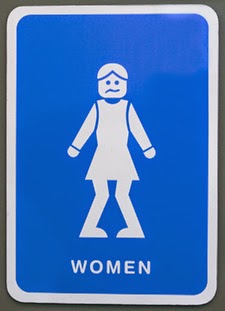Urinary incontinence is a problem that many women suffer with. Although there are men who experience this condition as well, it is much more prevalent in women. According to statistics there are approximately 25 million Americans who have some form of urinary incontinence and over 200 million people worldwide. 80% of these people are women.
Only one in 8 people who have urinary incontinence are actually diagnosed while the remaining continue to suffer the often unpleasant and embarrassing symptoms. There are various lifestyle and dietary changes one can undertake that can help alleviate some of the symptoms associated with urinary incontinence.
Symptoms of Urinary Incontinence: This loss of bladder control is chiefly characterized by a problem in controlling one's urination. It is often an involuntary leakage of urine that can occur in everyday moments such as when laughing or coughing.
This makes it a very stressful event for those who experience it. There are two types of incontinence and they are known as stress incontinence and urge incontinence. The stress type was described above. Urge incontinence is more severe and involves larger amounts of urine leaking and a frequent feeling of needing to urinate. Most women will have a combination of these two.
Causes of Urinary Incontinence: Women will often get stress incontinence from having had children or from gaining too much weight. Excess weight can weaken the bladder muscles leading to this condition. With urge incontinence it remains unclear as to what the initial cause is. However it could be due to some sort of irritation to the bladder.
Testing and Diagnosis: When seeing your medical provider you will receive a series of tests to determine if you have urinary incontinence. These include a bladder stress test and a urinalysis. If the doctor wants more advanced testing it may include a urodynamic test, ultrasounds and a cystometry test which helps to measure pressure on the bladder.
Once the doctor determines your diagnosis he or she will then be able to prescribe a course of treatment that will help alleviate and potentially completely control the incontinence. These are some of the medications that you may be prescribed;
Imipramine which is an antidepressant, Duloxetine which is also an antidepressant; low dose estrogen in a cream topical form and anticholinergics which work to make the bladder calmer.
Dietary and Lifestyle Changes: Of course in addition to these medical treatments there are numerous things you can do to help yourself with this problem. There is a common misconception that reducing your fluid intake will help make you urinate less frequently. This is not the right approach as it could lead to dehydration. You should stay hydrated for your health and this should be 6-8 glasses of water daily.
Include other beverages that you may be drinking towards this total amount. You should limit caffeine, alcohol and soda from your diet as these can be irritating to the bladder. Try to avoid drinking fluids at night.
Sugar: Eating too much sugar is unhealthy in general and particularly so if you have urinary incontinence. Sugar can also irritate your bladder. Many foods have hidden sugar in them so always read labels carefully. Sugar includes products that contain fructose and honey.
Cranberry juice: there has been a common misconception that cranberry juice helps with urinary incontinence in women. It is helpful with urinary tract infections. However with urinary incontinence it can aggravate the problem due to its acidity.
Lifestyle changes: Exercise is very important to helping this condition. There are specific exercises known as "Kegal" methods. The Kegal method is exercise that strengthens the pelvic muscles thus helping you to have more control in urinary flow. With continued use you should see an improvement.
Obesity: If you are overweight or obese your urinary incontinence condition will be further aggravated. Losing weight and being fit will certainly help you. For example if you have a heavy abdomen you will put additional pressure on your bladder and further weaken the muscles. When you take the weight off you will naturally strengthen these muscles that are not burdened any longer.
Other techniques: There has been success for many women by trying to control the urge to urinate when when they feel an overwhelming need to do so. Your immediate sensation is to run to the bathroom to alleviate yourself.
However if you can try to retrain your bladder to wait a bit longer you may eventually stop urinating as frequently. Start slowly and with what you are comfortable in doing. For example, begin with trying to wait 10 minutes before urinating when you get that urge to go.
Work your way up to 15 to 20 minutes if you can. This technique can eventually train your bladder and you will not need to urinate as frequently as before.
Clearly urinary incontinence is a problem for many women and can definitely affect the quality of their lives. By incorporating a sound plan that includes medical intervention and lifestyle and dietary changes you see experience significant improvement and controlling over this condition.
Remember as with any dietary or lifestyle changes, always consult with your medical provider before doing so, particularly if you have any disease or are taking prescription medication.
You Might Also Like
Healthy Aging Summit-Learn Top Secrets To Longevity!
Snoring Sleep Apnea No More!
Tooth Abscess Relief-Your Tooth Abscess Reliefer!
Bad Breath Free Forever-The 100% Natural Remedy For Bad Breath!
369 Delicious Recipes For Diabetics!
Discover How The Foods You're Eating Every Day Are Making Your Fat Cells SICK!
Teeth Whitening 4 You!
101 Instant Pot Recipes For Beginners Cookbook!


This post have 0 COMMENT